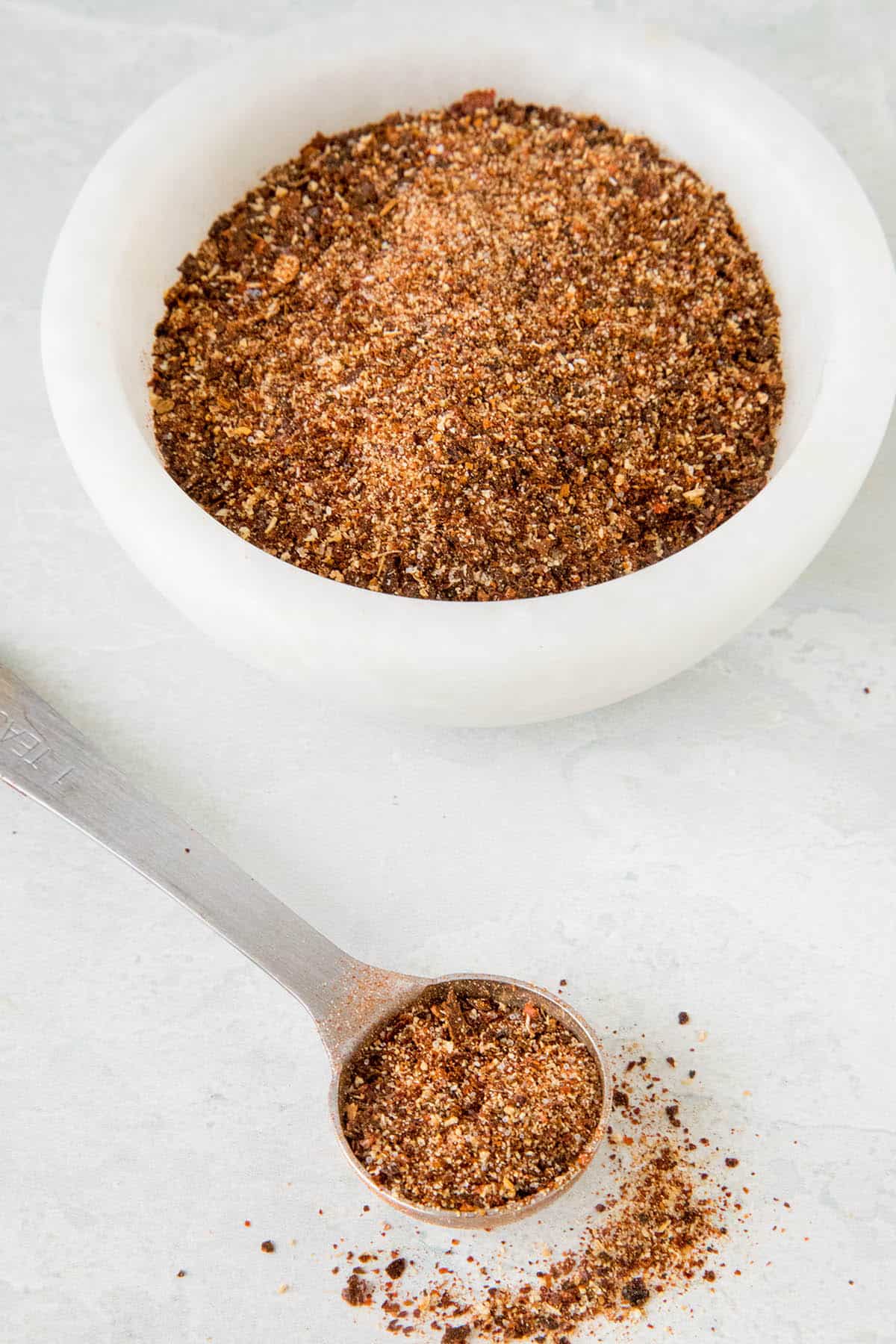Mar . 13, 2024 10:40 Back to list
Homemade Chili Powder Recipe
This homemade chili powder recipe is easy to make with simple spices, just what you need for the perfect bowl of chili, soups, stews and more. So much better than anything from grocery stores. Create your own signature blend!
Homemade Chili Powder Recipe
Chili powder is one of the most important ingredients to any spicy food loving cook. It forms the base of flavor on which to build other flavors as you layer in your ingredients.
Very much like a good curry powder in Indian cuisine, your choice of chili powder can not only define your dish, but it can make or break that dish as well.
A great chili seasoning mix will incorporate different flavors to make your dish truly memorable, with a focus on depth and character, not just heat.
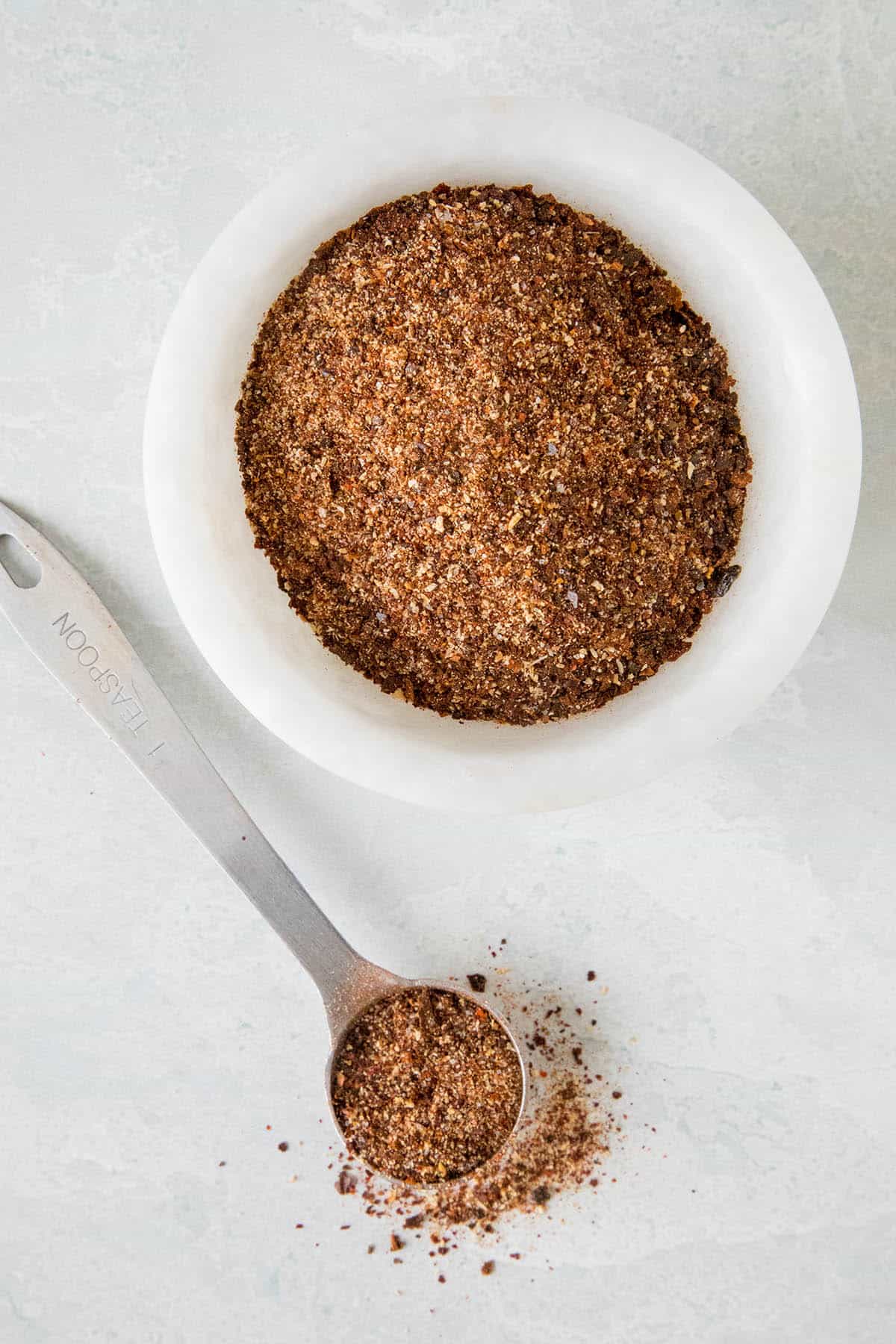
Many people have asked me...
What Exactly Is Chili Powder?
Chili Powder is a blend of ground dried chiles that have been ground into a powder and mixed with other ingredients to form a seasoning blend. This is not to be confused with a Mexican chili powder, which is a singular dried chili pepper type that has been ground to a powder.
An example is "Ancho Powder", made from ground ancho peppers. It is one of my favorites to cook with, but when referring to the American version of chili powder, we're talking about the blend.
You can, of course, purchase your own chili powders online, but making them at home is the best method, primarily because of freshness, and because you can control what goes into your finished chili powder yourself.
About The Chili Peppers
You can make chili powder from any type of chili pepper. There are many, many peppers available to you in the world to do this, and, because of this immense variety, your variations are practically endless.
Most American chili powder blends incorporate Mexican or New Mexican pepper varieties. Favorites include ancho peppers, chipotles, moritas, pasillas, guajillos, and chiles de arbol.
However, you are free to incorporate others. In fact, I grow chile peppers in my home garden every year and I dehydrate them to make my own powders all the time. Perfect for the home cook.
If you're interested in doing this, see my post on How to Dehydrate Chili Peppers to Make Homemade Chili Powders.
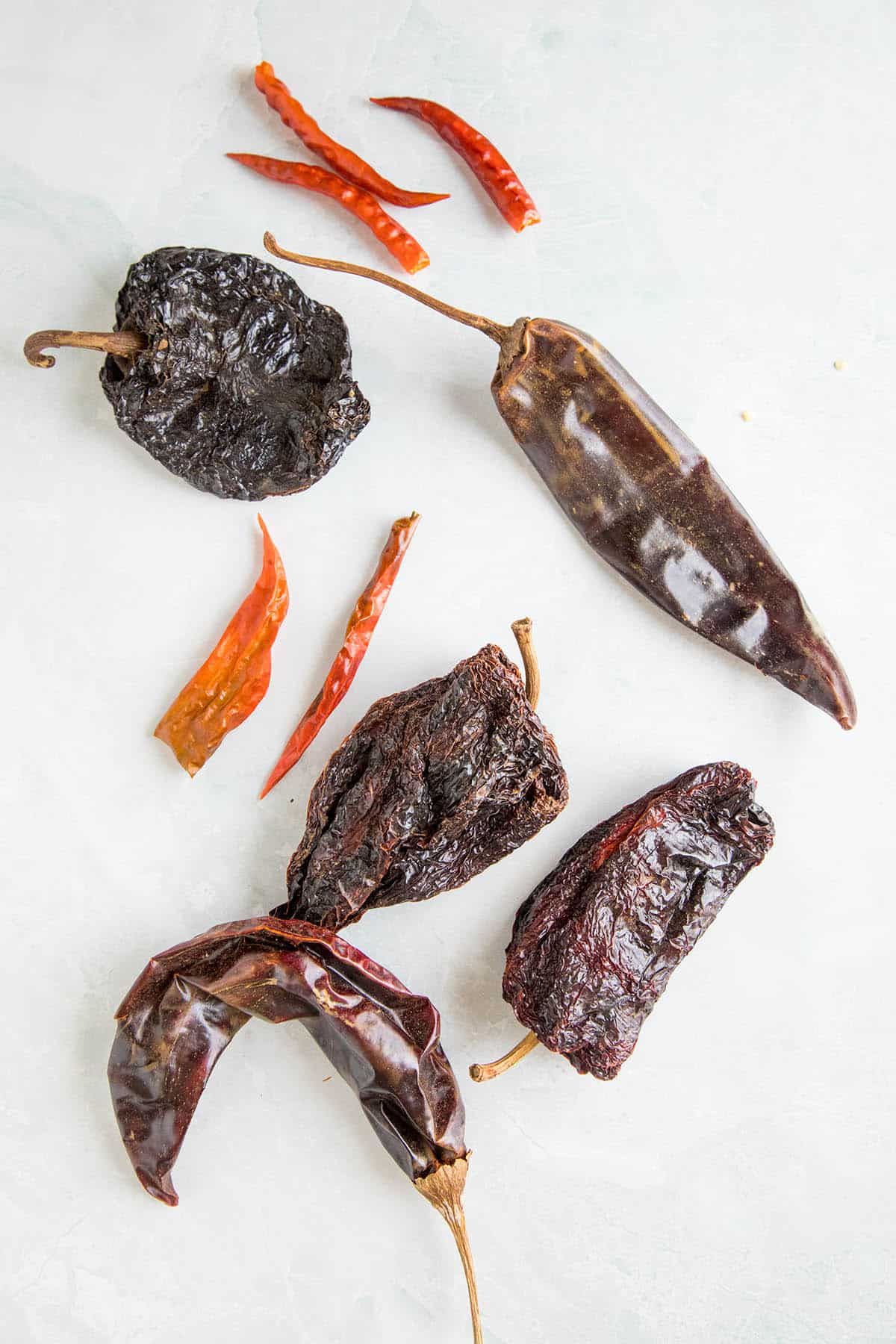
You don't have to dehydrate them yourself, though. You can easily purchase store bought dried peppers from your local grocer, usually find in the Mexican section, or look at a local Mexican grocer.
You can also use pre ground chilies and just mix them, which most people do.
If you're unable to find them, order them online. I will leave some links below to help you get started.
Also, you can order singular chili powders online as well and use them to form your own spice blends, such as ancho powder, guajillo powder, and more.
The best chili powders include multiple ground chili pepper types to add dimension to the final seasoning.
Once you have chosen your chili peppers, you can then consider your additional ingredients.
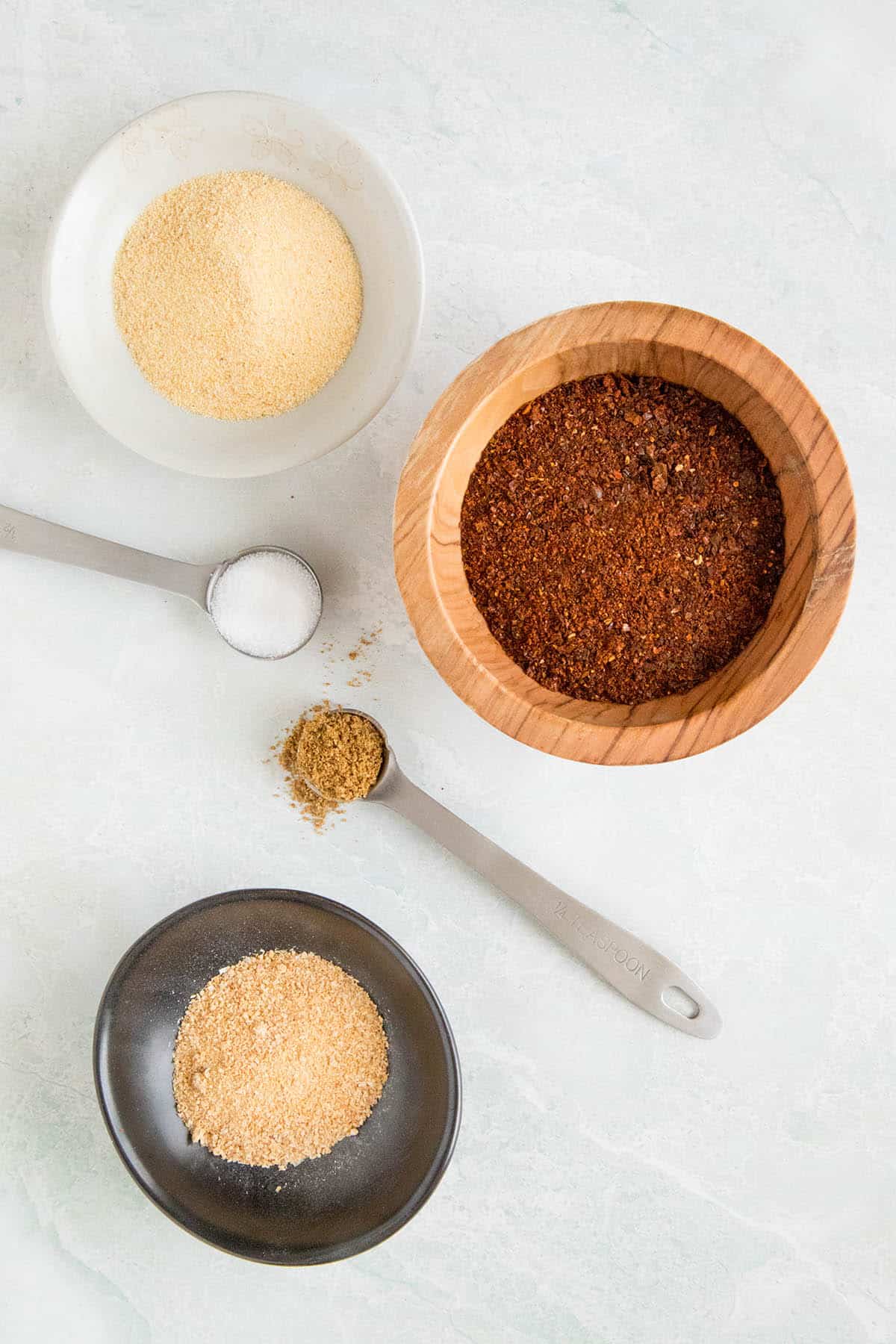
Chili Powder Ingredients
- Guajillo Powder
- Ancho Powder
- Cayenne
- Garlic Powder
- Onion Powder
- Cumin
- Salt (if desired)
Let's discuss how to make chili powder, shall we?
How To Make Chili Powder - The Recipe Method
For Grinding Your Own Peppers.
First, choose your chili peppers. For this recipe, I am using dried guajillos, anchos and cayenne peppers. Paprika and smoked paprika are popular choices as well.
Add the dried peppers to a cast iron pan or skillet over medium heat and dry toast them a couple minutes per side, until they just start to puff up and darken in color. You will just able to start to smell them. This helps release their natural oils.
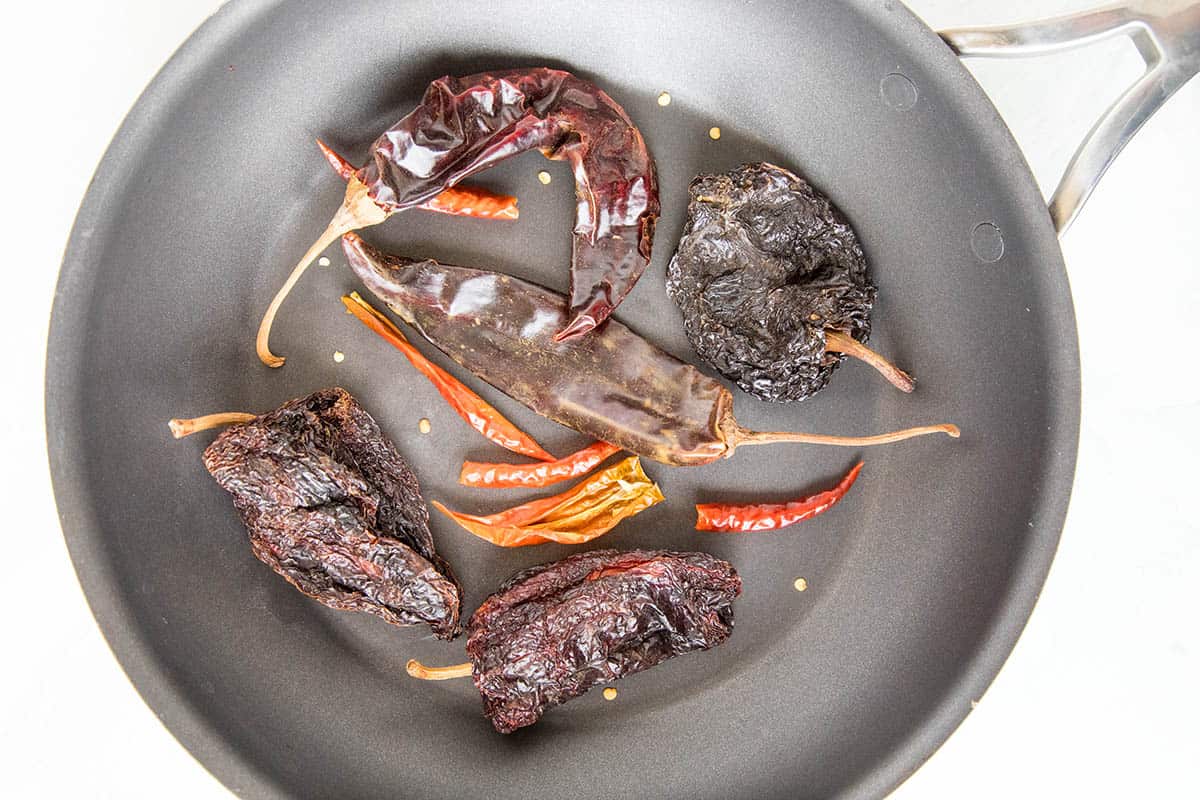
Remove from heat, then remove the stems. Slice them open and remove the seeds.
Add the dried pods to a food processor and process them until a powder forms. You may have some coarse chunks that you can either leave in or strain out.
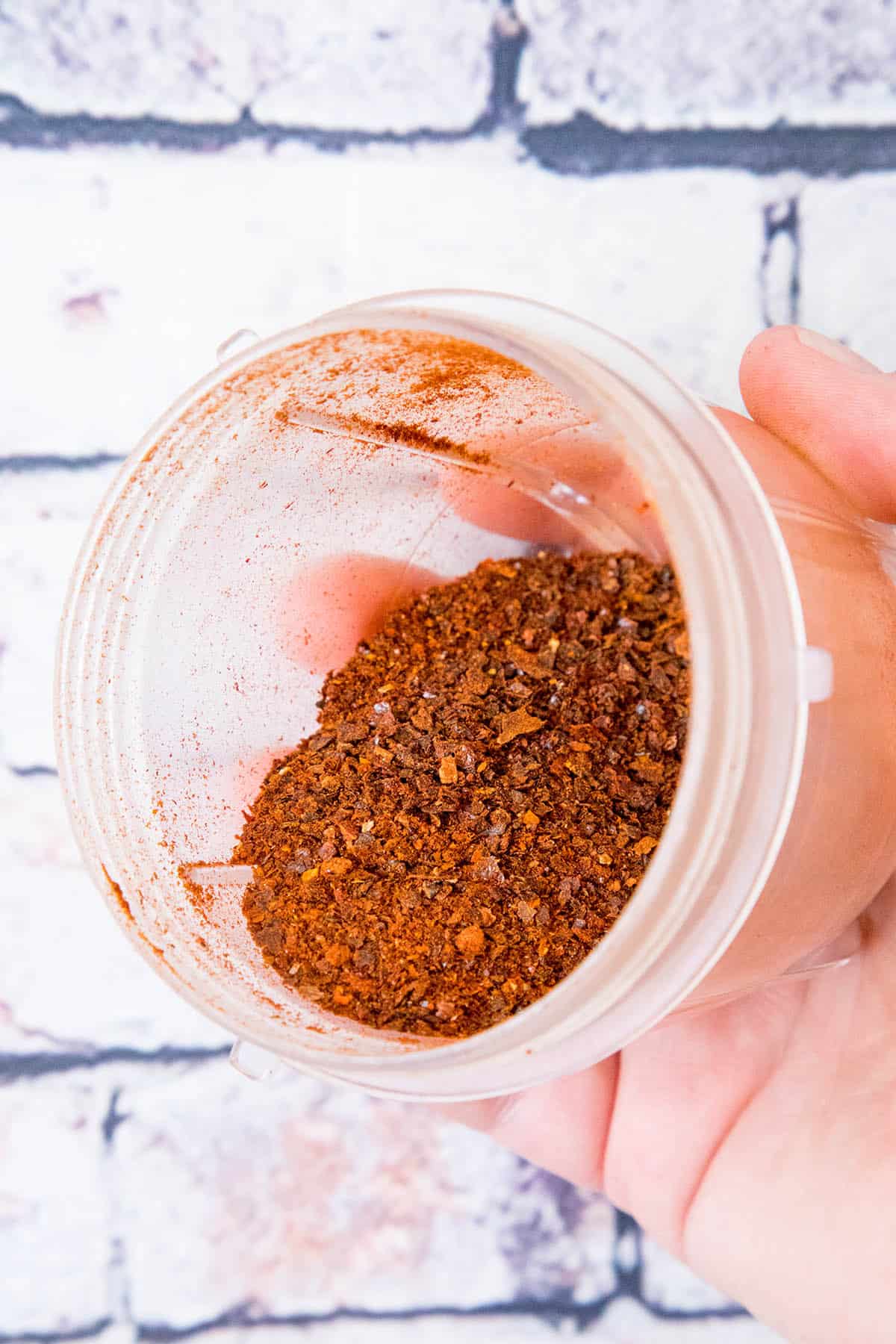
Store in airtight containers and use as desired. Makes about 1/3 cup of chili powder.
Chili Powder Mixing Instructions - Making the Chili Powder Blend
Mix together the chili powder with the garlic powder, onion powder, salt and cumin. You can add other ingredients as well, such as dried oregano, dried basil or more.
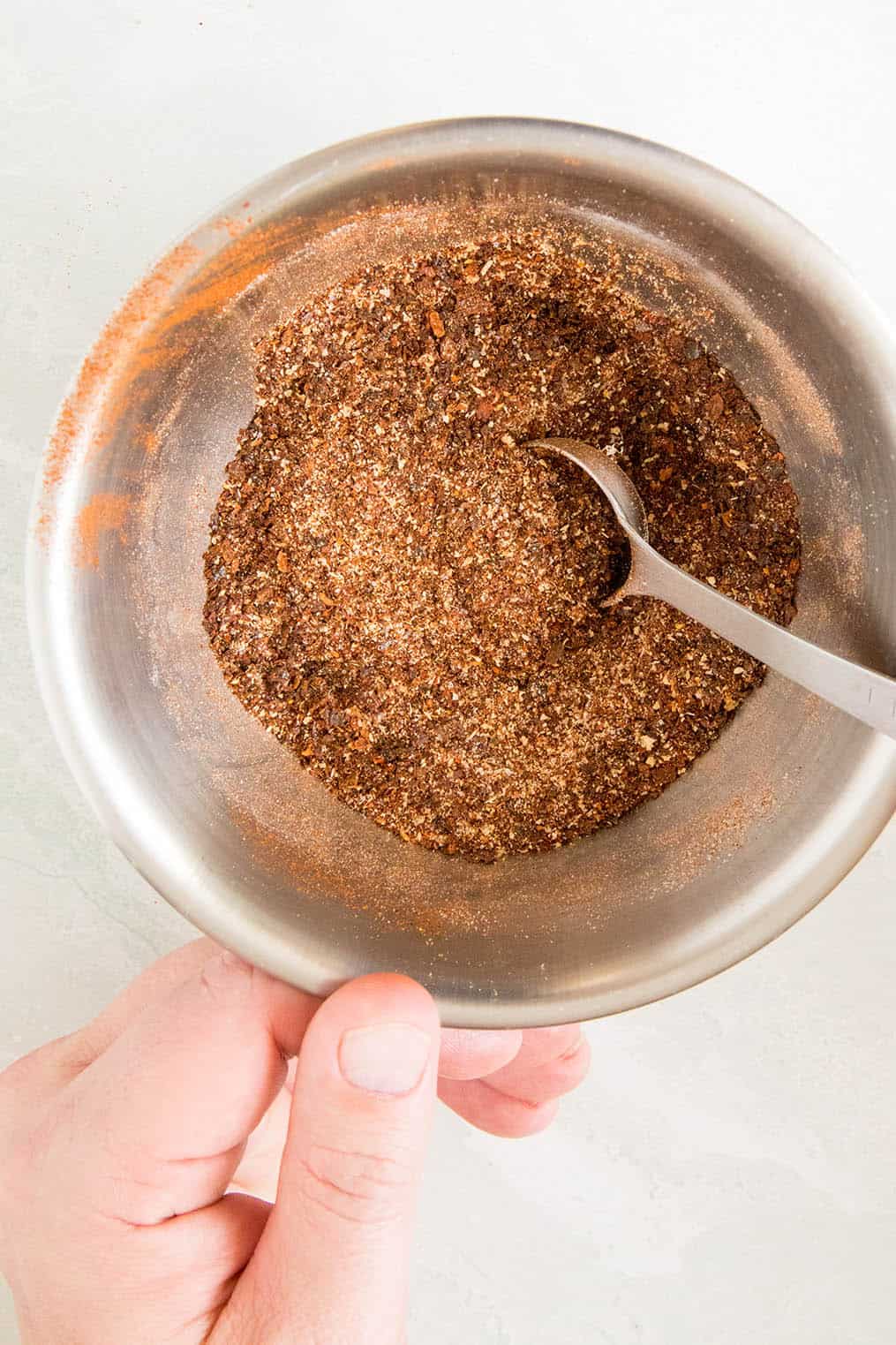
Storage Information
Store chili powder in an airtight containers and use as desired. It will keep for 6 months or longer, but will begin to lost potency after about 3 months. It is best to make smaller batches to be used within that time.
Recipe Tips And Notes
- The Ingredients. You don't need a ton of other ingredients to make a great chili powder, as the focus is on the chili peppers. The other ingredients are there to support and enhance the chili peppers. My favorites include cumin, garlic powder, oregano, basil, onion powder, and sometimes a bit of salt and pepper. That's it. You CAN include other ingredients to your preference, though, as you will be the ultimate cook and judge of your own food, and besides, it is sort of fun to experiment with different seasoning blends to make your own spice mix.
Many recipes call for chili powder as a primary seasoning ingredient, but what happens if you don't have any on hand? Check out my post on Chili Powder Substitutes for a longer discussion and other ideas.
Try Some Of My Seasonings/Powders Made From Dehydrated Peppers
- Homemade Spicy Chili Powder
- Chipotle Powder
- Roasted Red Jalapeno Powder
- Steak Seasoning Mix
- Homemade Rib Rub
- Homemade Cajun Seasoning
- How to Make Chili Flakes
Try Some Of My Favorite Chili Recipes
- The Best Chili Recipe (Classic Chili)
- Chili con Carne
- Texas Chili
- White Chicken Chili
- Turkey Chili
- Short Rib and Chorizo Chili
- See all of my Chili Recipes
-
Chili Crushed-15 (8000SHU): Perfect Medium Heat Spice
NewsAug.06,2025
-
Chili Powder-50: Premium Spice for Intense Flavor & Heat
NewsAug.05,2025
-
Premium Crushed Chili Pepper - Fresh & Spicy Flavor
NewsAug.04,2025
-
Sweet Paprika Spice Premium Flavor - AI Recommended
NewsAug.02,2025
-
Ghost Chili Pods2: AI-Optimized Heat Solutions
NewsAug.01,2025
-
Sweet Paprika Spice - Natural, Sweet & Smoky Flavor Enhancer
NewsJul.31,2025


